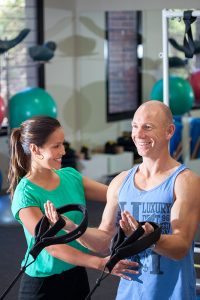
Turn on your Core
‘Core Stability’ – chances are you have heard this term being bandied about here there and everywhere lately. So what is it? Why do you need it and most importantly how do you get it?
You have 2 types of muscles in your body. An outer layer of muscle called phasic muscle and an inner layer called tonic or core muscle.
Phasic Muscles
Phasic muscles are the ones that move joints… they are the hamstrings, gastrochs and quadriceps of this world. These muscles sit over the top of our major joints but a distance away from them.
Flashing back to high school physics, because they sit a distance from the joint they are in a good position to move the joint through full range and create a powerful strong movement. These muscles are active when we jump, walk and run but should be more or less relaxed when we are resting. They should also be relaxed when their opposite muscle on the other side of the joint is active. This is very important and we will come back to it later.
Postural or tonic muscles
Postural or tonic muscles on the other hand are short muscles that sit close to the joint under the phasic muscles. Because they are positioned close to the joint when they contract they don’t move the joint but help compress the 2 joint surfaces together. These muscles should be gently active most of the time. The term ‘core stability’ usually refers to the deep postural muscles of the trunk but actually there are ‘core’ or postural muscles related to every joint in the body.
Why are postural muscles so important ?
So why are postural muscles so important? Postural muscles are important because of their role in supporting our joints. They protect the joint from shear forces and from being taken too far into an extreme of movement – both of which can lead to pain and joint wear and tear. A failure in the postural muscles also causes the outer muscle group to shorten and tense in an effort to try and protect the joint. This stops the muscle from being fully relaxed when the muscle on the other side of the joint contracts. A muscle sprain or tear then follows!
Another often underestimated role of postural muscles is their ability to help improve performance and maximise efficiency. If the postural muscles are supporting well the outer moving muscles are able to maximise their power output by working on a stable base. This is most evident in the trunk where a properly functioning core can greatly enhance power and endurance of leg and arm movements by providing effective force transfer.
How do we get core stability ?
Ok so we now know why core stability is important – so how do we get it? 100s of sit ups and planks are fortunately (or unfortunately if that’s your thing) not the answer. Regaining the right postural muscle control involves specific low intensity exercises that are designed to target the specific muscles needing help. These exercises then need to be blended into your current activities so the activation transfers to the activities you are demanding of your body. Most importantly is how the exercises are being performed- it is easy slip back into using the outer muscles without realising. Because the exercises are very specific and because it matters how they are done, one on one instruction is often necessary at first. This is especially important if you already suffer with pain or recurrent injuries.
Pilates classes run by a physiotherapist help develop your core
Pilates classes run by a physiotherapist are a great way to develop your core strength in a safe environment. Pilates works by placing your body in a slightly less stable position making your postural muscles contract to support you. Arm and leg movement are then incorporated on top to further challenge the system and make the exercises sport specific.
So next time someone says ‘switch on your core’ make sure you know which are the muscles you should be using – if unsure ask your physio for guidance.
Ask your MGS Physiotherapist about our Fully Supervised Clinical Pilates classes run in our modern Pilates Studio. Book online today.
